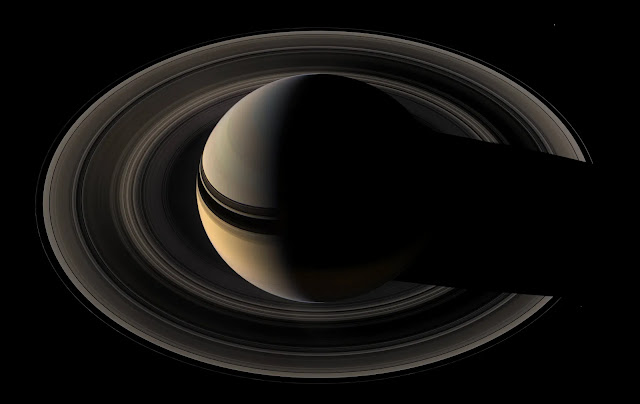A new study reveals the potential viability of Enceladus, Saturn's moon, for human habitation. The researchers found that the ocean region of Enceladus may be rich in soluble phosphorus, an essential but previously undetected element of life on this planet in the solar system.
Enceladus, the second Moon found around Saturn, has a thick shell of ice in the middle of a subglacial ocean, forming a clump that scientists have discovered contains the five basic elements of life, namely carbon, hydrogen, nitrogen, oxygen and sulfur. However, the essential element of phosphorus has not been found, as quoted from Xinhua, Tuesday (11/10/2022).
Due to the absence of elemental phosphorus, which is an essential component of bone, cell membranes, and DNA in humans and animals, Enceladus was previously considered uninhabitable by the international scientific community.
However, an international research team led by a number of Chinese scientists debunked previous findings by claiming that they found elemental phosphorus in the form of phosphates in the oceanic region of the Moon.
In the study, the researchers created a seawater-rock interaction model to simulate the geochemistry of the rocky seafloor of Enceladus.
"Sea water on this planet is known to be highly alkaline (very salty) and devoid of oxygen, similar to the sparkling water people drink on Earth," said lead researcher Hao Jihua of the China University of Science and Technology.
Has Been Around For Over 100 Million Years
In such a "soda" environment, it would take about 100,000 years for phosphorus to leach from the Enceladus rocks into the ocean.
Hao said the ocean of liquid water may have existed for more than 100 million years on Enceladus. Given its long history potential, rocks on this planet are expected to release large amounts of phosphorus into the oceans.
The study is published in the peer-reviewed journal Proceedings of the National Academy of Sciences of the United States of America.
Although phosphorus has not been explicitly discovered, the study provides a scientific reference for future exploration of the potential for life on Saturn's moon Enceladus, the researchers said.
How Many Layers of Saturn's Rings Are There?
Of all the planets surrounded by rings, Saturn is the most famous. These planetary rings were massive enough that Galileo could see them using a simple telescope in 1610.
Since then NASA has called Saturn the planet with the most recognizable characteristics in any world in the solar system, as quoted from the Mentalfloss.com page, Tuesday, February 8, 2022.
So, how many layers of rings does Saturn have? If you look at the picture, there must be a lot, or not even seen at all. Scientists don't know for sure how many rings Saturn has. There are eight main ring groups that span 175,000 miles, but some call it more than eight rings.
This system is named after the letters of the alphabet, in the order in which they were invented. Astronomers have known about ring groups A, B, and C since the 17th century, while another is a more recent discovery in 2009.
The rings that we can see in images of the planet -- even high resolution images -- are not single rings, but are actually made up of thousands of different tiny rings and can be very different in appearance, showing irregular ripples and kinks. The thick ice particles that make up Saturn's rings vary in size from as small as dust to as large as a mountain.
While the gap between Saturn's rings is small, the 26-mile-wide Keeler Gap is large enough to accommodate several moons, albeit very small.
New Ring Discovery
The largest ring system discovered in 2009 begins 3.7 million miles away from Saturn itself and the material reaches 7.4 million miles, though it is barely visible without the aid of an infrared camera.
Researchers are still discovering new rings as well as new insights into the familiar features of Saturn's ring system.
In the early 1980s, NASA's Voyager mission took the first high-resolution images of Saturn and its rings, revealing a previously unknown kink in one of its narrower rings, known as the F ring.
In 1997, NASA sent the Cassini orbiter to continue the space agency's studies of the ring planet, leading to the discovery of new rings, so faint that they were not known until Cassini's arrival in 2006.
Before Cassini was sent and burned up in Saturn's atmosphere in September 2017, it took 22 dives through the space between the planets.


